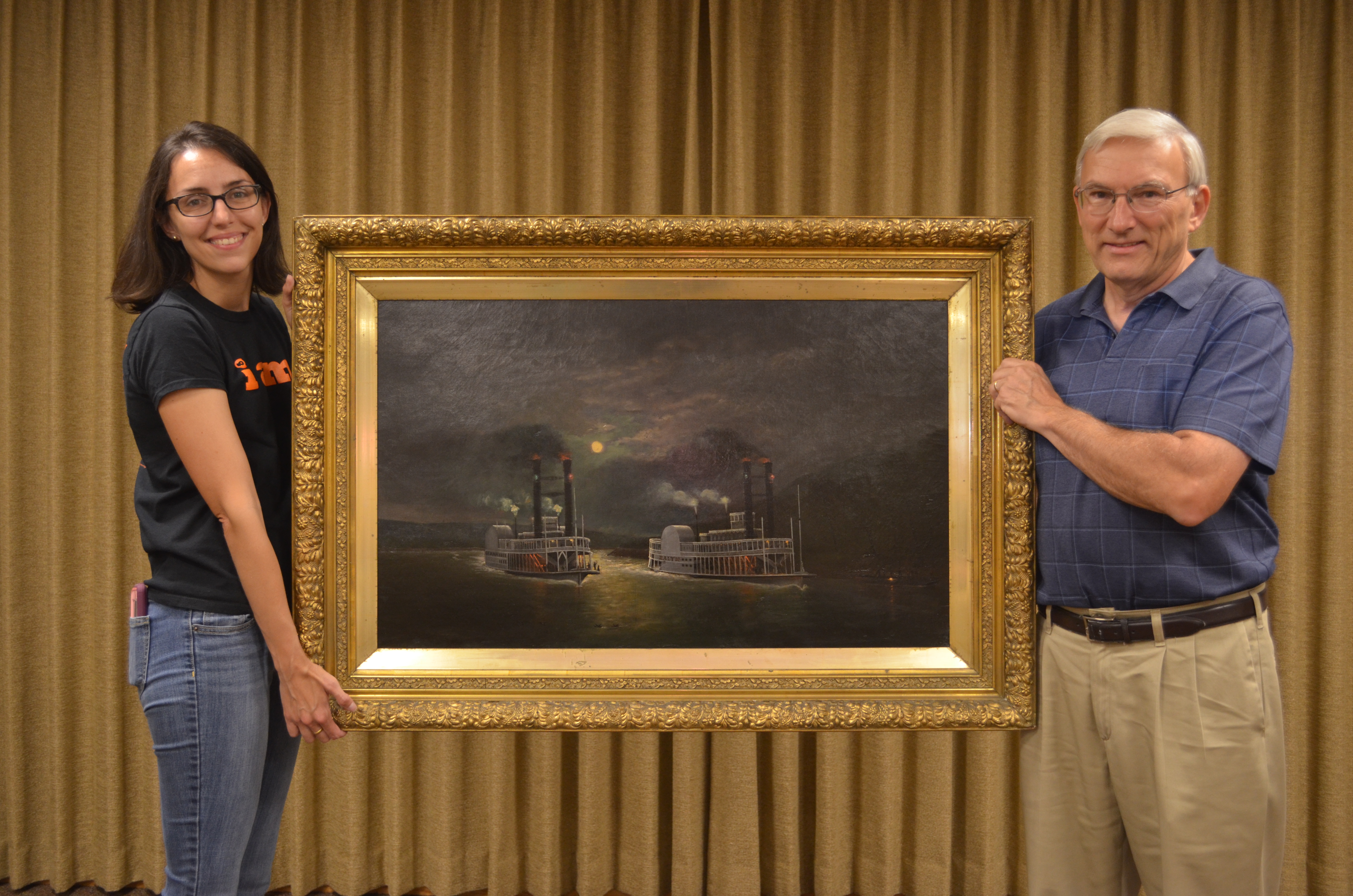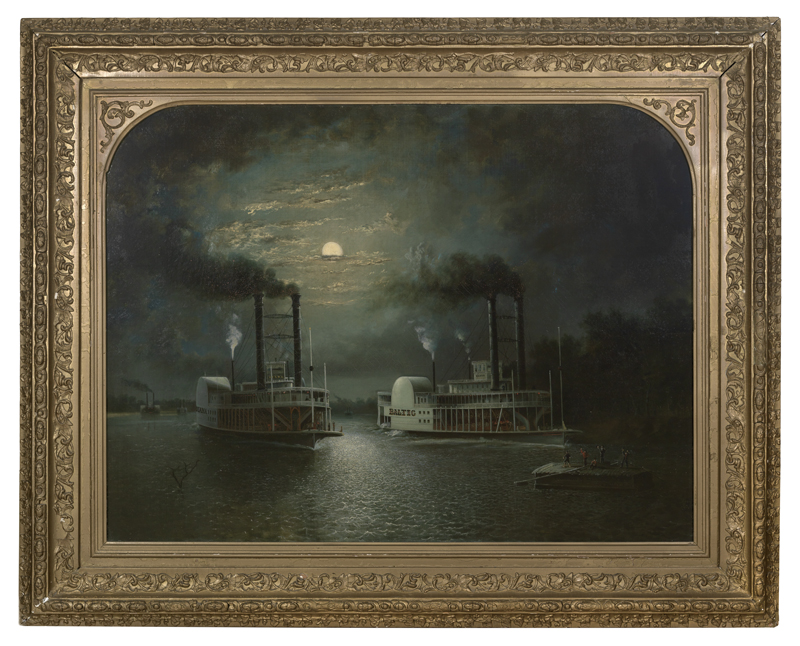The Carnegie Center for Art and History recently accessioned—or added to the permanent collection—A Steamboat Race on the Mississippi, a painting by well-known New Albany artist Ferdinand Graham Walker. (Fig. 1) The gift came from Bruce Webster of Columbia, Maryland. How, and why, does a painting in Columbia, Maryland find its way to the Carnegie Center in New Albany, Indiana?

Fig. 1. Bruce Webster presented Ferdinand Graham Walker’s painting to the Carnegie Center for Art and History Director Eileen Yanoviak on September 6, 2018. Ferdinand Graham Walker, A Steamboat Race on the Mississippi, circa late 19th or early 20th century. Carnegie Center for Art and History Collection.
Although largely known for his portraiture, Walker occasionally painted landscape and riverscape scenes. Walker’s painting of two majestic steamboats bathed in moonlight is an example of a popular subject and pastime of the 19th century—the steamboat race. (Fig. 2) According to Springfield Museums entry on a similar print,
Speed contests between rival steamships were common between 1850 and 1875 and large sums of money were often wagered on the outcome of the race. Captains often overlooked safety as they pushed their boats to win the contest. Unfortunately, boiler explosions were common and fire destroyed many of the ships. However, this did not stop the public from trying to secure passage on the racing boats as the danger only served to add to the excitement of the race. In the print, Currier & Ives have documented the race between the Eagle and the Diana, which is ahead and will be the ultimate victor.¹
Thanks to Mr. Webster’s research and records, we can trace this painting back to his maternal grandparents’ family, who were born and raised in New Albany in the 19th and 20th centuries.² The family names were Smith, Schan, Green, and Meekin. Among the Meekins was Captain Charles Hamilton Meekin (1808-1884), who built, owned, and was captain of the steamer “Baltic”. In March 1858, he captained the “Baltic” in a famous steamboat race against the “Diana” which was captured in an undated painting by George F. Fuller. (Fig. 3) The popular image was also reproduced as a print engraved on stone by A Weingartner in New York in 1859 and subsequently by Currier & Ives.

Fig. 2. A steamboat race on the Mississippi, between the Baltic & Diana. , ca. 1859. May 21. Photograph. https://www.loc.gov/item/2003680981/.
According to Mr. Webster, “Sometime thereafter, Captain Meekin’s son, James Himes Meekin (1836 – 1922), who was the pilot on the ‘Baltic’ during the Civil War, commissioned Ferdinand Graham Walker (1859 – 1927), who had his studio in New Albany, to create a similar painting of the race evidently based on Fuller’s original painting…The painting was passed down within the Meekin family for several generations as they lived in New Albany through the 19th and 20th centuries.”

Fig. 3. George F. Fuller, Mississippi Steamboat, Forbes Library Digital Gallery, accessed September 21, 2018, http://images.forbeslibrary.org/items/show/876.
Interestingly, other materials relating to Captain Meekin, including a marble and wood table from his steamboat and a portrait presumed to be Captain Meekin, also found their way to the Carnegie collection. Walker’s painting joins these objects that will help the Carnegie tell the history of the Meekin family and the steamboat era. As a historian of the 19th century with a particular affinity for the steamboat era and riverscapes, this painting is an exciting addition to the collection. Stay tuned to see these objects installed at the Carnegie Center for Art and History.
Eileen Yanoviak, PhD, Director, Carnegie Center for Art and History
¹ “A Race on the Mississippi, Currier & Ives,” https://springfieldmuseums.org/collections/item/a-race-on-the-mississippi-currier-ives/ Accessed 9/21/2018.
² Family lineage information and provenance provided by Bruce Webster via email correspondence May 14, 2018.
